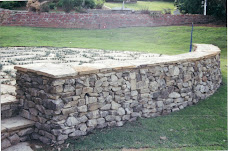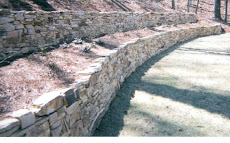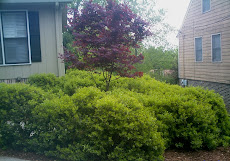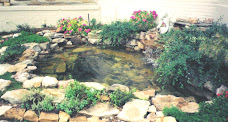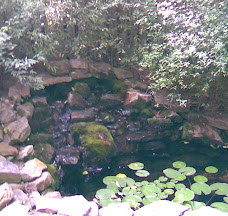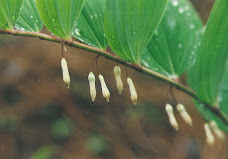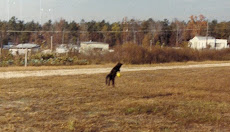
Crape myrtles are popular in our region of the mid to lower South and rightfully so. Unlike the in vogue nature of plants such as Bradford pear and Leyland cypress, crape myrtles actually have positive ornamental characteristics that far outweigh any negatives associated with this Southern horticultural heavyweight. Among the characteristics that have many wanting at least one crape myrtle in their yard are the distinctively showy blooms, the exfoliating bark that ultimately reveal an often colorful muscular trunk, and the superb fall foliage that can range from delicate yellows to intense reds. When it comes to negatives, the crepe myrtle itself can usually be held without blame. Many times, it is the owner of the crape myrtle that has committed the no-no, and so, without delay, here is my list of the Top Ten Crape Myrtle No-No's: PHOTO: Nachez crape myrtle - possibly the most used and well-known of all crape myrtle varieties.
PHOTO: Nachez crape myrtle - possibly the most used and well-known of all crape myrtle varieties.
10. Selecting a plant that requires massive pruning to fit into it's space - Today's crape myrtle is much different than those that our parents enjoyed. We have a multitude of varieties available to us with enhanced cold tolerance, improved insect and disease resistance, and most importantly, we have crape myrtle varieties that, at maturity, grow as small as one foot tall, to giants that can reach 40' tall. With all these choices, it is upon the designer/installer to chose the appropriate plant. For instance, if you have a space where you want a white crape myrtle that grows to about 10' tall, then you should be looking for a semi-dwarf variety. Named crape myrtles usually are tagged with information that tells you how large they are going to grow or you can do a little research online and find out what varieties fit the parameters you've set up. When looking for a white crape myrtle that grows 10' tall at maturity, you don't want to buy a Nachez, for instance. Nachez crape myrtles will grow over 30' tall and will quickly become too large for your space. The better choice would be one of the white semi-dwarf crape myrtles, like Acoma.
9. Buying a plant labeled red or white or pink or purple - I've seen this from time to time. A crape myrtle simply tagged, "pink". This is a sure sign that you are probably not purchasing an improved variety and it is your guess as well as anyone else's as to how large it's going to grow. Your best bet is to steer clear and seek out a named variety.
8. Not buying a plant that is insect or disease resistant - Insect and disease has, in the past, been quite the bugaboo for crape myrtles. Aphids and powdery mildew were among the most bothersome agents of doom when it came to crape myrtle decline. Now, with improved varieties available to the public, you can pretty much purchase crape myrtles secure in the thought that they will grow well and you won't be treating them every growing season. Of course, the disclaimer is: nothing is absolute and sure as I talk about improved insect and disease resistance, there are isolated cases. Crape myrtle lists are out there that will signify certain varieties as being more hardy than others if you really want to cover all your bases. PHOTO: Tuscarora crape myrtle - Here it is used as a street tree. Tuscarora crape myrtles will grow to 20' tall by 15' wide and have huge flower panicles (12" by 8") that are dark coral pink for about 70 days during the summer. Nachez, Tuscarora, Tonto, Souix and a score of other crape myrtles are from what is referred to as the Indian series. This series of crape myrtles is readily available at reputable nurseries and are highly recommended.
PHOTO: Tuscarora crape myrtle - Here it is used as a street tree. Tuscarora crape myrtles will grow to 20' tall by 15' wide and have huge flower panicles (12" by 8") that are dark coral pink for about 70 days during the summer. Nachez, Tuscarora, Tonto, Souix and a score of other crape myrtles are from what is referred to as the Indian series. This series of crape myrtles is readily available at reputable nurseries and are highly recommended.
7. Improper spacing - When planting a grouping of crape myrtles, attention should be paid to spacing. One characteristic of crape myrtle that can be enjoyed is the graceful branching habit. A way to diminish this characteristic is to plant too closely together and planting too closely together inhibits air circulation (which is helpful in fending off disease) and makes the landscape appear cluttered. As I've mentioned, every crape myrtle has a mature height it will grow to, but they also have a range that they will grow to in width. For example, Acoma crape myrtles are usually listed as growing to about 8' - 10' high and to about 10' - 12' wide. So, if you are planting a grouping of three Acoma crape myrtles, you probably don't want to plant them closer than 10' or 12' apart.
6. Planting in too much shade - I've seen crepe myrtles growing in too much shade and they always look unhappy (yes, I occasionally think of plants as having human emotions :-)). Now, a crape myrtle will grow nicely in just a little shade, but know that the more shade it is subjected to, the fewer number of blooms you will have, the less foliage you will have during the growing season, and the more the crape myrtle will grow leaning toward the sunlight.
5. Not keeping your crape myrtles pruned up - As you will see when you get to rule No. 1, I am not a big fan of pruning crape myrtles. I do, however, encourage limbing up and the removal of dead and intersecting branches. The limbing up process does not apply so much to the more dwarf and shrub varieties of crape myrtle and much as they do to crape myrtles that you want to look like multi-trunk or single trunk trees. The limbing up procedure is where you take smaller limbs growing out from a main trunk and prune them off flush with the main trunk. These limbs are typically going to be located on the bottom 1/3 of the plant and, when removed, give the crape myrtle more of a tree-form appearance. Also, removing dead limbs and branches that intersect, rubbing against each other, is a way to improve the overall health and attractiveness of the crape myrtle.
4. Underplanting with too much plant - I most definitely encourage underplanting crape myrtles, especially when they are planted in natural areas or as part of a foundation planting. What you want to avoid, though, is underplanting with material that overwhelms the crepe myrtle. For example, large hollies or conifers don't look good under crape myrtles. Try using low growing plant material to plant under a crape myrtle. Ground covers and other low growing plants are great to plant under crape myrtles (Asiatic jasmine, English ivy, Autumn fern, dwarf azalea, etc.).
3. Clashing colors - When it comes to crape myrtles, too much of a good thing isn't necessarily good. Typically, in my landscape designs, I may have a singular crape myrtle plant or perhaps a grouping of several crape myrtles of one variety, but rarely do I incorporate multiple crape myrtle plantings of different varieties. If you have a grouping of red crape myrtles in your yard, for instance, and you insist on going with another grouping of a different color crepe myrtle, you might avoid using purple. More importantly, I would keep in mind the colors in your landscape in relation to when and where your crape myrtle is blooming. For instance, you may not want to plant summer blooming yellow hypericum under your Souix crape myrtle unless you enjoy the interplay between a medium pink and yellow. Opinions about colors in the landscape are of a subjective nature and all I can do is offer my opinion. I lean toward what I'd call "kinder combinations" with white being the great equalizer. I prefer using different shades of pink together or white with just about any other color. I'm OK with magenta combined with pink while I try to stay away from purples with red, lavenders and pinks with yellow, etc. PHOTO: Chickasaw crape myrtle - a dwarf variety. This established plant from an Auburn University research center in about 2' tall.
PHOTO: Chickasaw crape myrtle - a dwarf variety. This established plant from an Auburn University research center in about 2' tall.
2. Having a rogue crape myrtle - Seeing a planting of 4 pink crape myrtles and 1 purple one is more of a pet peeve for me than anything and it is often beyond the buyer's control. Sometimes plants simply get tagged incorrectly. With crape myrtles, when you are buying a group of one variety, take the time to examine each plant, even if they are tagged the same. You can sometimes spot a rogue plant by noticing that its habit of growth is different from the others or the leaves seem to be of different size or, if it is fall, that the fall color of one plant is different from the others. Still, if you realize that you've got a wrong colored crape myrtle....please! Replace it!!! (How's that for drama?).
1. Crape Murder - Who ever came up with that saying has given landscape professionals a catch phrase for the ages. And why not? When you top a crape myrtle, you are acknowledging that your crape myrtle was not properly selected or that you are a status quoer! (I just invented a word!!!). If you are a crape murderer, I still love you. I just don't want you within a mile of my yard if you have pruners on your body. :)
Wednesday, March 25, 2009
Top Ten Crape Myrtle No-No's
Posted by
themanfromearth
at
12:55 PM
344
comments
![]()
Labels: crape myrtle, deciduous landscape plants, landscape tip, pruning, trees
Subscribe to:
Comments (Atom)





